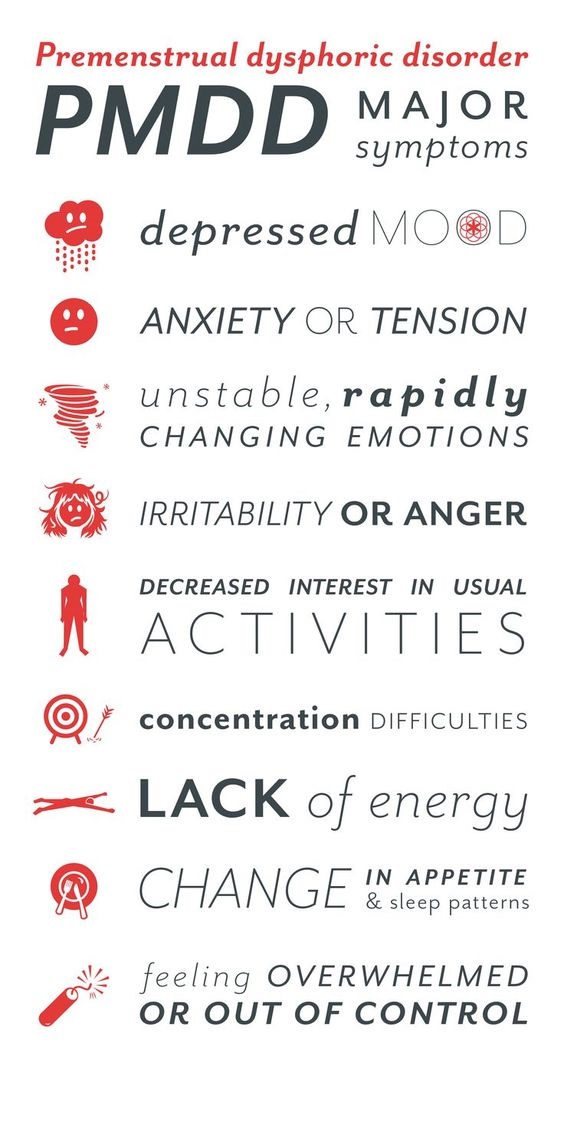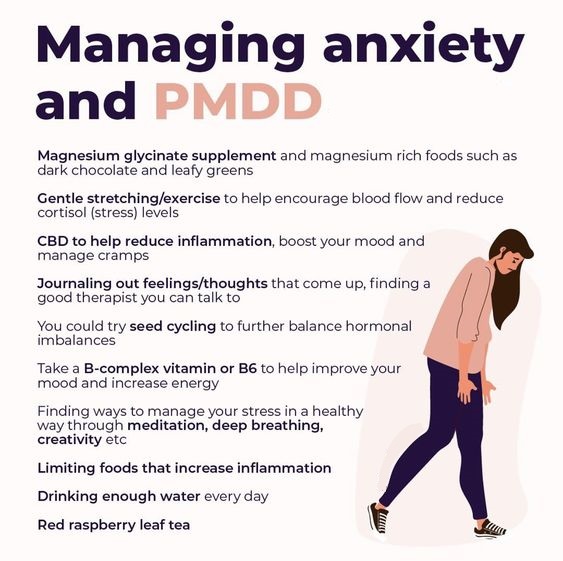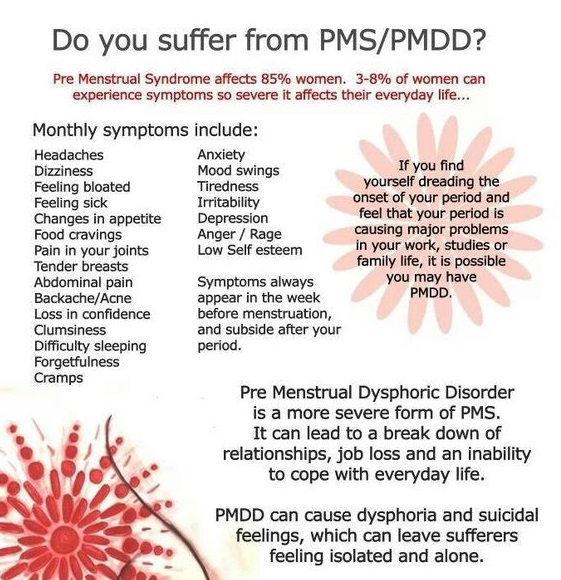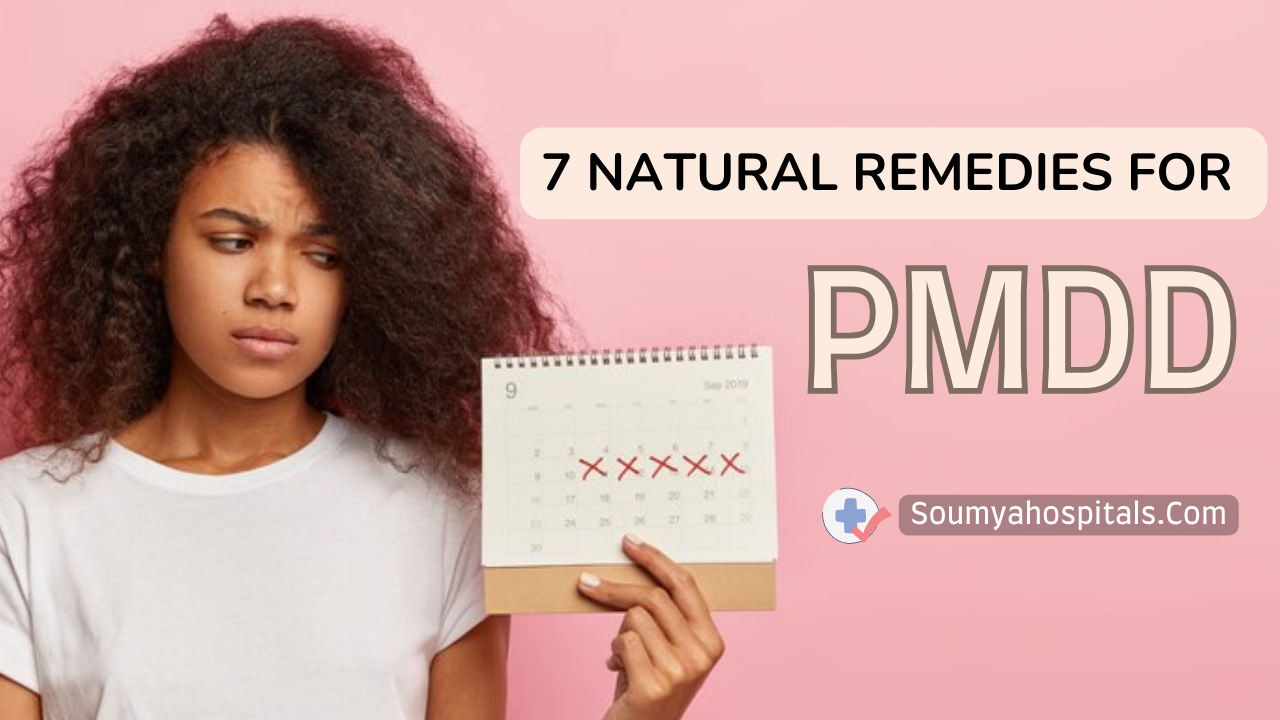Do you experience extreme emotions like deep sadness or rage before your menstrual periods? Many women experience problems like mood swings, bloating, pain in the abdomen, and tenderness in the breasts before their periods start. This is a condition known as premenstrual syndrome and it can be quite uncomfortable.
It’s thought that hormonal changes that occur during the menstrual cycle have a part to play in the development of these symptoms. But for some women, the symptoms can be so severe that they interfere with normal life. This severe form of premenstrual syndrome is known as premenstrual dysphoric disorder (PMDD). Women with PMDD may also experience other psychological symptoms like depression, anxiety, anger, low self-esteem, or anger.
Also Check: Obstetrics and Gynaecology NCLEX Questions
Let’s take a look at some measures that can help you deal with PMDD.
Mainstream Medical Treatments For PMDD
Your doctor may recommend one of several treatments for dealing with PMDD:
- The combined contraceptive pill and estrogen patches can help improve symptoms by preventing ovulation.
- Antidepressants known as selective serotonin reuptake inhibitors are sometimes prescribed to treat the depression associated with PMDD.
- Synthetic hormones may be used to stop your periods.
- In severe cases, where other treatments have failed surgery may sometimes be recommended. A hysterectomy and the removal of the ovaries may then be carried out to deal with PMDD.

Natural Treatment For PMDD
While seeing an OB/GYN and getting help is important, several natural steps can be used alongside your main treatment or to alleviate many of the symptoms. Put these in place today.
1. Fine-Tune Your Diet
Making a few changes to your diet can be helpful in managing PMDD.
- Go in for fiber-rich whole grains and have plenty of fruits and vegetables that keep you energized and ply you with the right nutrients.
- Have more proteins and complex carbohydrates which have tryptophan, an amino acid that’s a precursor of serotonin. This neurotransmitter plays a role in regulating mood and could be helpful in dealing with PMDD. Think whole grains again, along with lentils, vegetables like pumpkins, yam, peas, beans, fish, and eggs.
- Cut down on salt, sugar, caffeine, and alcohol.
2. Get Your Daily Dose Of Vitamins And Minerals Naturally
Some vitamins and minerals can help relieve symptoms of PMDD. Make sure you get enough of these:
- Calcium And Vitamin D: Cheese, yogurt, and milk as well as vegetables like broccoli, kale, and cabbage can give you calcium. Vitamin D, which helps you absorb calcium, can be produced by your body when your skin is exposed to sunlight. It’s also present in foods like eggs, tuna, and mackerel.
- Magnesium: This mineral is present in legumes, whole grains, nuts, and leafy vegetables like spinach.
- Folic acid: Folic acid or folate is present in peas, eggs, dairy products, spinach, Brussels sprouts, and asparagus.
- Vitamin B6: Potatoes, beef liver and, chickpeas, bananas, and fish like tuna are good sources of vitamin B6.
- Vitamin E: Vegetable oils like sunflower oil and safflower oils as well as nuts like almonds, peanuts, and hazelnuts are really good sources of vitamin E.
3. Exercise Regularly
Regular exercise can benefit your health in many ways. It can also help alleviate symptoms of PMDD. One study that looked at the effect of aerobic exercise and strength training on premenstrual symptoms found that both improved many of the symptoms. Aerobic exercise was found to be more beneficial especially with regard to premenstrual depression.
Try to get in at least two and a half hours of moderate aerobic exercise (for instance, swimming, cycling, or brisk walking) in a week. Other forms of exercise like yoga or pilates, which include stretching and breathing techniques, can reduce stress and help you sleep better.
4. Go For Cognitive Behavioral Therapy
Cognitive behavioral therapy is a talk therapy that focusses on helping you identify and change unhelpful thought patterns and behaviors. This therapy can help you deal with issues like mood swings, anxiety, and depression associated with PMDD. It focusses on your current problems rather than issues from the past and tries to find practical ways to help your state of mind.Treatment may consist of around 10 sessions spread out over a few weeks.

5. Use Herbal Remedies
Some herbal remedies will also be able to help you deal with the symptoms of PMDD. But do remember to check in with your doctor before you try out herbal remedies as they can have side effects or interact with your medications. You should also consult a trained herbalist or naturopath for guidelines on how to have them and how much to take.
- Chasteberry: This fruit, native to the Mediterranean region, is commonly used to deal with PMDD. A study that looked at its effect on symptoms like irritability, anger, mood alteration, bloating, and headache found that over half of the participants with premenstrual symptoms who took an extract of chasteberry experienced a 50% or greater reduction in symptoms.
- Evening Primrose Oil: According to research, evening primrose oil can be effective in treating symptoms associated with PMDD like depression, irritability, fluid retention, and breast pain. So how does evening primrose oil work? Prostaglandin E1, a naturally occurring fatty acid, is derived from the essential fatty acid gamma-linolenic acid in evening primrose oil. It is thought to attenuate the effects of the hormone prolactin which may be responsible for some of the symptoms seen in PMDD.
- St John’s Wort: This herbal remedy has been valued for its medicinal properties for ages. A study looked at the effect that an extract of St John’s wort had on seventeen symptoms associated with premenstrual syndrome, including anxiety, depression, insomnia, irritability, fatigue, aches, and breast tenderness. A significant reduction was seen in all the symptoms, with overall premenstrual syndrome scores improving by 51% at the end of two menstrual cycles.
- Ginkgo: Ginkgo biloba is well-known for its many beneficial effects. This tree, which is considered a “living fossil” because it exists for millions of years without changing, may be useful in alleviating the symptoms of PMDD. One study where the participants took a leaf extract of ginkgo thrice a day from the 16th day of the menstrual cycle to the 5th day of the next cycle found that it reduced the severity of both psychological and physical symptoms.
6. Go For Acupuncture
The ancient Chinese practice of acupuncture can help alleviate symptoms of PMDD. Acupuncture, which is based on the principles of traditional Chinese medicine, believes that disease is caused due to blockage of the vital energy Qi, which flows along pathways in your body known as meridians. It is thought that stimulating certain points known as acupoints in the body can clear blockages and restore health. One study found that when women suffering from PMDD underwent acupuncture sessions twice a week for two menstrual cycles, they showed significant improvements in the symptoms of anxiety and depression.

7. Try Homeopathy
Homeopathy also has several remedies that can be useful in treating the symptoms of PMDD.
- Sepia, prepared from the fluid in the ink sac of cuttlefish, may be recommended for depression and irritability.
- Calcarea, carbonate of lime, can help deal with tenderness in the breasts before your periods as well as irritability and depression
- Pulsatilla or windflower can be useful for bloating, headaches, depression, and anxiety.
Depending on your symptoms a homeopathic doctor will be able to recommend the appropriate treatment for you.
